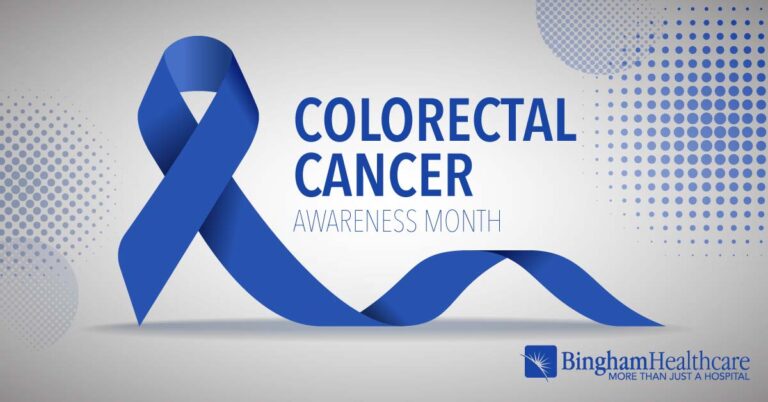
Understanding Carpal Tunnel Syndrome
Carpal tunnel syndrome can turn ordinary activities into difficult obstacles, but it’s important to understand the facts. Just because someone has a pain or numbness in their wrist, doesn’t automatically mean its carpal tunnel syndrome.
Dr. Garry Martin is a plastic/reconstructive and cosmetic surgeon who is fellowship-trained in hand and microvascular surgery, and is a member of the East Idaho Orthopedic Institute. He cleared up some common misconceptions about carpal tunnel syndrome.
A GRASP ON THE CONDITION
The carpal tunnel is a small tunnel in the wrist that the median nerve and tendons pass through. The median nerve controls muscle strength and skin sensation over specific parts of the hand and wrist. It also regulates a few muscles at the base of the thumb and sensation to the palm side of the thumb, index finger, middle finger, and half of the ring finger.
Carpal tunnel syndrome develops over time when the median nerve becomes compressed in the tunnel for various reasons. As a result, there is a disruption to the flow of blood to the median nerve. In mild to moderate cases, this can cause a numbness and tingling in the fingers, which manifests itself as the feelings of pins-and-needles, like when your arm or leg falls asleep. In severe cases, someone will experience high levels of discomfort and/or the inability to use their hand, specifically the thumb muscles. These symptoms may occur anytime, but are most common during or shortly after activity or at night.
GETTING A HANDLE ON THINGS
The common myth that carpal tunnel syndrome develops from typing for eight hours just simply isn’t true. “The reality is that we don’t actually know what causes a majority of cases,” says Dr. Garry Martin. Potential causes include repeated and forceful movements of the hand, but one of the reasons that it can be difficult to determine the factors that cause carpal tunnel syndrome is because it’s fairly common.
Research shows that carpal tunnel impacts roughly 5 percent of the population in the United States—or 1 in 20 Americans—and females are 3 to 10 times more likely than men to experience carpal tunnel syndrome. While the peak age range for the development of carpal tunnel syndrome is from 40 to 50 years old, people from the ages of 20 to 80 have been diagnosed.
DIAGNOSING CARPAL TUNNEL SYNDROME
Taking the time to meet and understand what a patient is experiencing is something Dr. Martin takes very seriously. When seeing a patient who is concerned about uncomfortable symptoms in their hands or wrists, he first asks a series of questions to be able to diagnose the situation as mild, moderate or severe.
According to Dr. Martin, “One determination that needs to be made is if the patient is feeling pain or numbness. Because nine tendons run through the carpal tunnel into the hand, there could be other causes for the pain or discomfort.” The numbness a patient is experiencing may not be an irritated nerve in the carpal tunnel, it could be tendonitis.
In evaluating a patient, Dr. Martin takes the time to figure out what factors caused the symptoms of numbness or discomfort. Aggravating factors can be any daily activities that cause the symptoms, including using a rake or broom, pulling weeds, or driving a car to more vigorous activities like mountain climbing.
Tracking your symptoms can help your doctor find the best treatment for you and the best way to do this is to start a daily log of your symptoms. It is helpful to note which activities aggravate or alleviate your symptoms of pain, numbness, or tingling. How long those symptoms last before they subside, if at all, and how long those symptoms have been present. This will enable a doctor to look for patterns in activities and allow for a more accurate diagnosis and treatment plan.
FINDING RELIEF
Dr. Martin encourages patients to keep an open mind on what may work. Many people with symptoms of carpal tunnel attempt to ease their symptoms with the use of vitamin B complex, splinting, massages, and/or stretching, like Yoga. But, in many cases, these are only temporary fixes, and it’s important to see a doctor if you are experiencing unknown symptoms with your hand or wrist. It’s easier to repair any potential damage early on as opposed to waiting too long, where damage may become irreparable and irreversible.
ENDOSCOPIC CARPAL TUNNEL RELEASE
Unique to most hand and wrist surgeons in southeast Idaho, Dr. Martin is trained in Endoscopic Carpal Tunnel Release (ECTR). In many moderate to severe cases, there is hope to help a patient with carpal tunnel syndrome. Instead of making an incision in the palm and entering the carpal tunnel, as most doctors perform, Dr. Martin is highly trained in advanced techniques. He makes a small incision at the wrist crease and uses endoscopic equipment to view the carpal tunnel on a monitor, allowing for a shorter scar in a (typically) less sensitive area. With the Endoscopic Carpal Tunnel Release, within a few weeks, the majority of patients will be able to return to most normal activities. Early motion and use of the fingers is encouraged within a couple days of surgery to begin the recovery process.
The most important message Dr. Martin shares about carpal tunnel syndrome is: “the discomfort and numbness is not something you have to live with—it can be addressed.”
About Garry Martin II, MD
Dr. Garry Martin II specializes in plastic/reconstructive and cosmetic surgery, and is fellowship-trained in hand and microvascular surgery. He is qualified to perform all aspects of hand surgery, including traumatic hand surgery, carpal tunnel, and arthritis procedures. His office with the Orthopedic Institute is located on the first floor of the Bingham Memorial Medical Plaza in Blackfoot. Dr. Martin is welcoming new patients and same day appointments are available. To schedule a consultation, please call 208/782-2885
If you enjoyed this article, you may like our other articles:
Return to Health Matters for Women, February 2015 Edition
Return to Articles


